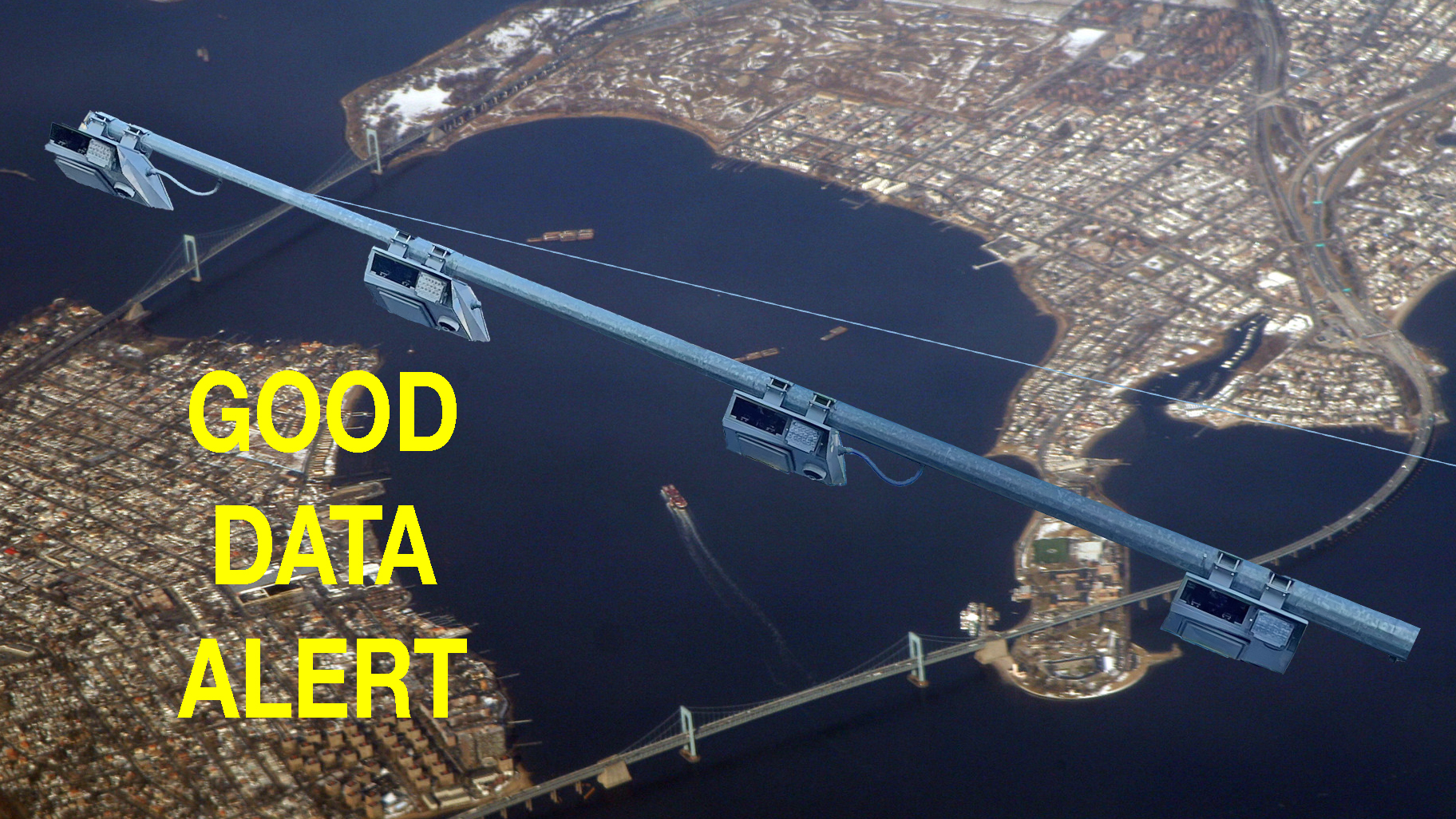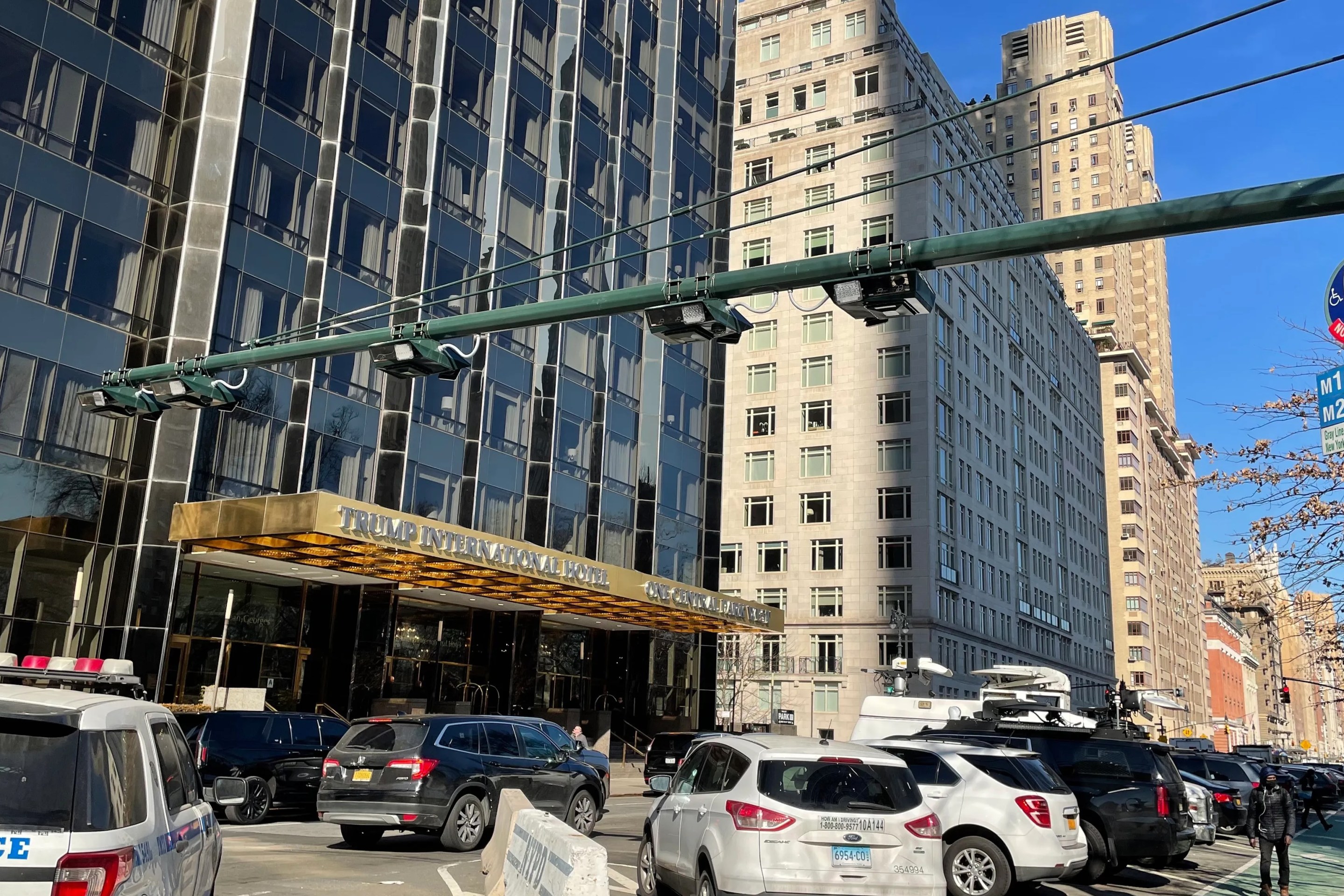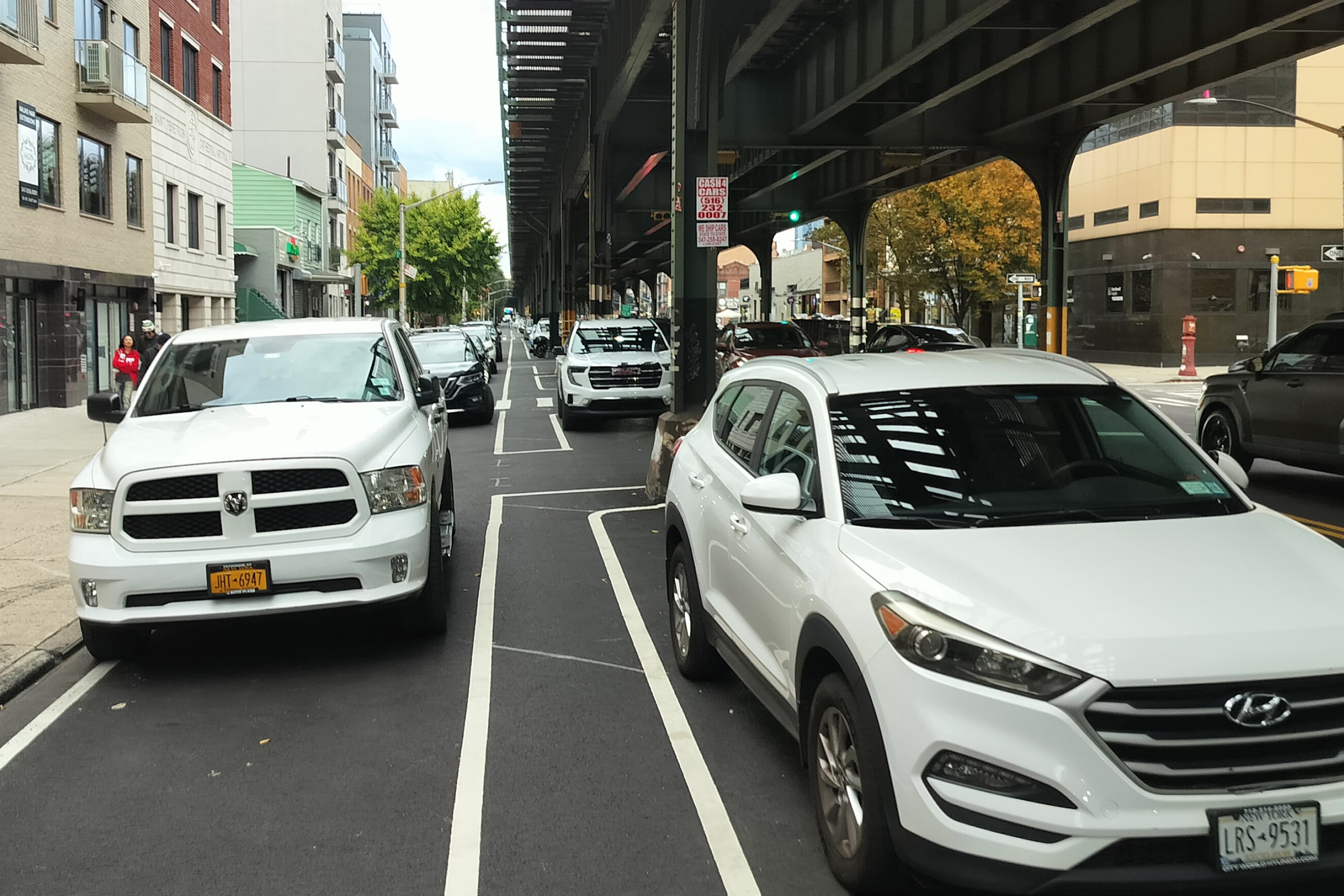The incredible disappearing traffic keeps disappearing.
Vehicle volumes on the Cross Bronx Expressway were lower in January and February this year compared to last year, the MTA revealed in a court filing on Monday night in its congestion pricing suit against the Federal Highway Administration — a finding that once again demonstrates the success of the central business district tolling plan.
According to the data, average vehicle volumes dropped on the Cross Bronx from 146,711 cars and 18,034 trucks per day in January and February of 2024 to 143,043 cars and 17,811 trucks per day this January and February, after the onset of the toll — decreases of 2.5 percent and 1.2 percent, respectively.
The drop follows reporting in Streetsblog and analysis from Sam Schwartz that showed that car and truck drivers were not circumventing the Manhattan toll zone by cutting through Staten Island, Queens or the Bronx, as some congestion pricing opponents — and even the 2022 environmental assessment for congestion pricing — predicted might happen by thousands or even tens of thousands of vehicles. (That possibility led the MTA to commit to a number of mitigation efforts.)
Congestion pricing advocates welcomed the news that the Cross Bronx wasn't inundated with toll avoiders in the early days of the traffic toll.
"Any traffic drop on the Cross Bronx is a huge win," said Jaqi Cohen, the director of climate and equity policy at the Tri-State Transportation Campaign. "We didn't necessarily know what to expect, but reduced traffic on the Cross Bronx is a best case scenario for congestion pricing working."
Cohen did add that the reduced traffic had other implications, such as blunting New York state's belief that it must widen the Cross Bronx.
"Now what we want from [Gov. Hochul] is to ensure traffic continues to reduce in the Bronx by agreeing not to expand the Cross Bronx," said Cohen.
Overall traffic volumes went up slightly on the Triborough Bridge to start the year, jumping 1.9 percent from January and February 2024 to the same months in 2025. But even then, truck trips dropped 2.7 percent in the first two months of this year compared to last year.
The lack of traffic spillover into environmental justice communities is yet another piece of evidence on how well congestion pricing is working. Since the toll has gone into effect on Jan. 5, it's basically been all good news for congestion pricing: there have been fewer crashes in lower Manhattan, bus speeds are up on some of Manhattan's most congested lines, Broadway attendance is up compared to last year, more people have been visiting lower Manhattan and the lower Manhattan economy is on pace for almost one billion dollars more in retail sales compared to last year.
The court filing was a piece of the MTA's larger filing in its ongoing congestion pricing suit against the FHWA. Also on Monday, the MTA and New York State DOT asked Judge Lewis Liman to issue a temporary restraining order to prevent U.S. Transportation Secretary Sean Duffy from freezing federal funding or approvals for other projects in the city and state while congestion pricing remains in effect, as Duffy threatened to do before Liman can decide on the legality of the federal government's unilateral attempt to end congestion pricing.
In the filing, the MTA argued for a TRO because the agency will win its current suit over Duffy's declaration that congestion pricing is no longer legal (the prospect of winning the case itself is a key factor for judges in determining whether to grant a TRO).
The agency also argues the TRO is necessary because the Trump administration has established a pattern of trying to force state and local governments and even private actors to do its bidding by withholding federal funds.
"With no serious defense on the merits, the Administration has now resorted to what seems to be its modus operandi: attempting to improperly leverage federal funding in order to coerce compliance with its wishes, rather than defend the legality of its propositions in court," the agency's lawyers wrote in their brief asking for the injunction.
The U.S. DOT has until May 16 to respond to the filing. Since taking over, the Trump administration has said it can withdraw the Biden administration's approval of congestion pricing. That opinion has not been legally tested.






